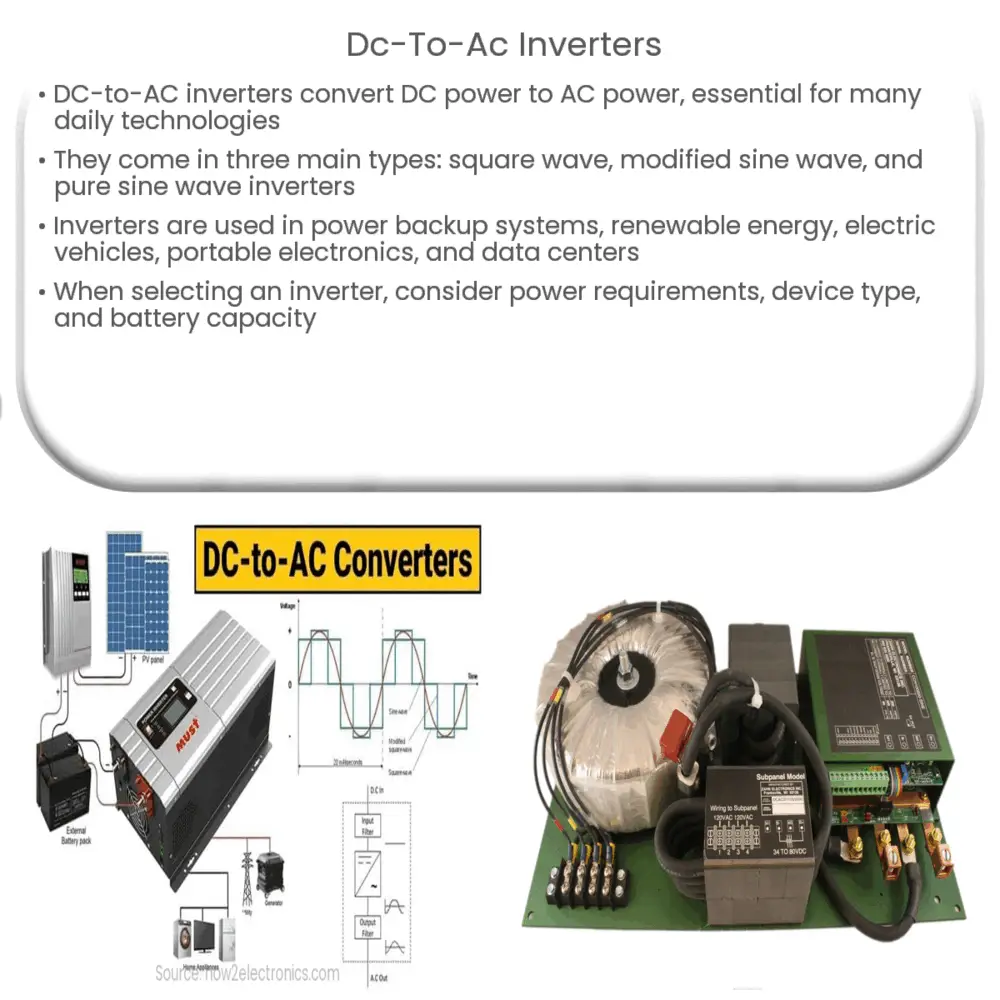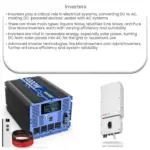Explore the fascinating world of DC-to-AC power inverters, their types, working principles, applications, and the critical role they play in modern life.

Introduction to DC-to-AC Inverters
Power inverters, specifically DC-to-AC inverters, play a crucial role in our daily lives, often without us even realizing it. From powering home appliances to sustaining critical data centers, they form an integral part of modern power systems. Understanding how they work can provide deeper insights into the everyday technology that surrounds us.
What is a DC-to-AC Inverter?
In simple terms, a Direct Current (DC) to Alternating Current (AC) inverter is an electronic device that converts DC power to AC power. DC power is a form of power that flows in one direction, while AC power is a form of power that periodically changes direction. Various types of electronic devices require different forms of power for operation. Most household devices use AC power, whereas many portable devices, such as mobile phones, use DC power.
Types of DC-to-AC Inverters
- Square Wave Inverters: These are the simplest and most cost-effective type of inverters, ideal for simple, low-sensitivity electronics. However, they are less efficient and produce a lot of electrical noise.
- Modified Sine Wave Inverters: An improvement over square wave inverters, these deliver greater efficiency and are compatible with most appliances. However, they may not work well with sensitive electronic devices.
- Pure Sine Wave Inverters: These are the most advanced and efficient type of inverters. They produce an output that closely matches the power from an electrical grid. These inverters are more expensive but work well with nearly all types of electronic devices.
How Does a DC-to-AC Inverter Work?
A DC-to-AC inverter operates through a complex process involving three main stages: the oscillator stage, the amplifier stage, and the output transformer stage. The oscillator stage generates a high-frequency AC signal from the DC input. This signal then gets amplified in the amplifier stage. Finally, the output transformer stage converts the high-frequency AC into the desired output level.
Applications of DC-to-AC Inverters
From portable electronics to industrial machines, DC-to-AC inverters have a broad range of applications:
- Power backup systems: Inverters are often used in power backup systems, such as Uninterrupted Power Supplies (UPS), to convert battery-stored DC power into AC power for household or office use during power outages.
- Renewable energy systems: In solar power systems, the generated DC power is converted into AC power using inverters, making it usable for most household appliances or for feeding into the grid.
- Electric Vehicle (EV) systems: Electric Vehicles, which are powered by DC batteries, use inverters to convert DC power into AC power for driving the electric motors.
- Portable electronics: Many portable electronic devices, such as laptops or power tools, come with inverters in their AC adaptors to convert the AC power from outlets into DC power that the devices can use.
- Data Centers: Inverters are used in data centers to ensure constant, uninterrupted power supply. They convert the DC power stored in batteries into AC power in case of a power failure, avoiding data loss and hardware damage.
Considerations When Choosing an Inverter
Choosing the right inverter is crucial for the proper functioning of your devices and systems. Here are some key considerations:
- Power requirement: The power output of the inverter should match the power requirement of your device.
- Type of devices: Sensitive devices such as computers, high-end TVs, and certain medical equipment may require the clean power that only pure sine wave inverters can provide.
- Battery capacity: The inverter should be compatible with the DC source’s voltage level. The battery capacity will determine how long the inverter can supply power.
Conclusion
DC-to-AC inverters are pivotal components of our power infrastructure, playing a crucial role in many different aspects of modern life. By converting DC power into AC power, they allow a wide range of devices and systems to function seamlessly, from home appliances and portable electronics to electric vehicles and data centers. Understanding the different types of inverters, their working principles, and their applications is crucial for anyone interested in electronics, renewable energy systems, or simply understanding more about the everyday technologies that power our lives.
As with any piece of equipment, choosing the right inverter depends on the specific requirements of the devices and the systems in which they will be used. It’s important to match the inverter’s power output to your device’s power requirements and to ensure compatibility with the voltage level of your DC source.
In summary, the role of DC-to-AC inverters in our world cannot be overstated, and their importance will continue to grow as we continue to evolve towards a more electrified future.



